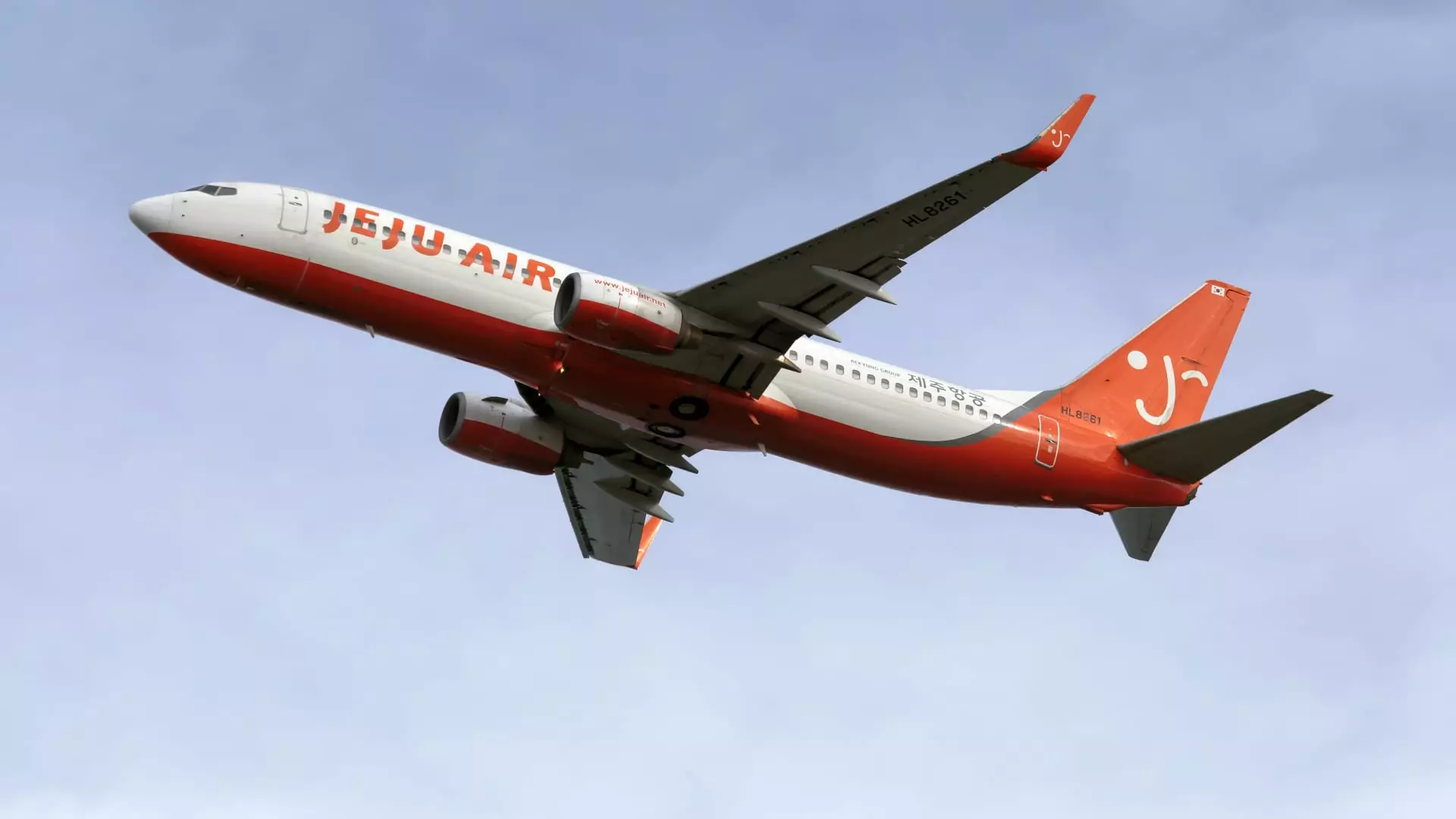The recent tragedy involving Jeju Air Flight 7C2216 at Muan International Airport has left the aviation industry and the world reeling. This catastrophic event, which resulted in the loss of all but two of the 181 individuals on board, has sparked intense scrutiny regarding aviation safety practices, aircraft reliability, and emergency protocols. As investigators delve into the circumstances that led to this devastating belly landing, the focus is not only on the technical aspects of the aircraft but also on broader implications for air travel in South Korea and beyond.
Operated since the late 1990s, the Boeing 737-800 is one of the most prevalent models in commercial aviation, frequently celebrated for its track record of safety. This aircraft model, however, is now under sharp focus due to the tragic circumstances surrounding the Jeju Air incident. With approximately 4,400 units in service globally, the 737-800 accounts for a significant portion of the airline fleet. Its age, averaging 13 years, coupled with the peculiarities of airline operations, raises inevitable questions about whether this incident could be an anomaly or indicative of an underlying issue with an aging fleet.
Though Jeju Air’s aircraft was delivered in 2017, its history—previously flown by Ryanair—adds layers to the investigation. The importance of the aircraft’s maintenance history needs to be considered as investigators explore whether any lapses in routine check-ups or repairs could have contributed to the malfunction.
Investigators are currently exploring several theories surrounding why the plane’s landing gear was not deployed prior to impact. Theories range from the mundane—a pilot oversight or mechanical failure—to more severe incidents such as bird strikes that could have incapacitated the engines. Aviation experts are carefully analyzing these possibilities, as understanding the sequence of events is vital for preventing future incidents.
One of the more perplexing aspects is the idea that, even if a hydraulic failure occurred, pilots are trained to manually deploy landing gear. This raises critical questions about possible crew incapacitation or communication breakdown during a high-stress emergency situation. Veteran safety investigators emphasize the need for thorough training regarding emergency protocols and real-time decision-making to ensure that crew members can respond effectively, even under duress.
The incident has prompted South Korea’s acting president, Choi Sang-mok, to call for immediate inspections of all Boeing 737-800 aircraft operating within the country. This urgent review indicates an acknowledgment of the potential vulnerabilities that aviation authorities must continuously address. Such an inspection serves as not only a response to this disaster but also as a reminder of the ongoing accountability that the aviation industry must uphold to protect the lives of passengers and crew alike.
The collaboration of various aviation authorities in the investigative process demonstrates a coordinated effort to ensure thorough scrutiny and transparency. The role of the National Transportation Safety Board (NTSB) and Boeing in the investigation is particularly significant, given that the aircraft was manufactured in the United States. International coordination among different regulatory agencies underscores the global nature of aviation operations and the shared responsibility for safety across borders.
As the investigation progresses, many in the industry are left wondering about the potential ramifications of the findings. While it is premature to draw conclusions about systemic failings, the incident serves as a pivotal moment to reevaluate existing safety protocols and pilot training procedures. Continuous improvement in aviation safety requires vigilance and adaptation to new challenges.
The tragic event is a stark reminder of the importance of rigorous safety standards and the critical nature of training for aviation professionals. In light of this disaster, it is imperative that stakeholders across the aviation sector engage in robust discussions about lessons learned and necessary changes to prevent similar events in the future.
The Jeju Air crash stands as a grim milestone in aviation history. As investigators continue to piece together the events leading to this tragedy, there lies an urgent need for deep introspection within the air travel industry. The findings may not only offer clarity regarding this specific event but also pave the way for enhanced safety measures, improved oversight, and ultimately, a stronger aviation ecosystem that prioritizes the lives of all those who board flights worldwide.

